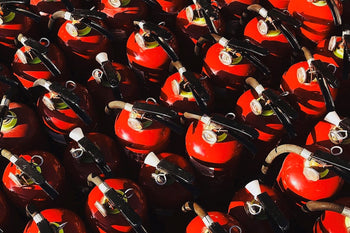Many new cars are backordered for months and used car prices are at an all time high. On average, used car prices in 2021 have increased 37%. In early January, the US Bureau of Labor Statistics released the Consumer Price Index that found consumer inflation had a bigger increase in 2021 than in the previous 40 years.
There are several reasons behind this massive rise in prices and general Supply-Chain disruption:
Unfortunately, despite all the magic in the North Pole, Christmas decorating costs are increasing just like everything else. In fact, Christmas trees and other holiday decorations are among some of the items with the steepest price increases of 2021, with many seeing a price bump of 30% or higher. With the Labor Department estimating that most product prices will continue on a similar upward trajectory, the average cost of a Christmas Tree will be much more expensive for 2022.
With all these upcoming holiday price increases, now may be the best time to get an early start on renting your Christmas decorations this year before prices go up yet again.

HOW COVID-19 WILL RAISE CHRISTMAS TREE COSTS IN 2022
Christmas 2020 was a holiday season unlike any other. Amongst the Santa facemasks and toilet paper ornaments, almost everyone saw their holiday traditions completely upended by the pandemic. While 2021 was a marked improvement, it was far from the return to normal that many expected. Even with a possible end in sight, vaccine mandates and ongoing safety restrictions are still causing new issues. When discussing the ongoing effects of the pandemic, it is not just social distancing and face masks. Coronavirus has made a lasting impression on the workforce in ways that may never change. Countless employees lost their jobs and many businesses shuttered forever. Many who were lucky enough to remain employed were able to shift gears by working remotely. However, that was never an option for factory workers, such as those manufacturing food, toys, and even Christmas decorations.
In order to continue manufacturing goods while keeping their workforce safe, many companies had to implement greater health measures and completely redesign the workflow of their factories. As outlined by CDC guidelines, this included enforcing social distancing, limiting shared use of equipment, purchasing PPE supplies, and implementing sanitization stations, as well as temperature and wellness checks. Some businesses received government loans to introduce these safety procedures; however, many of these measures are still in place without government aid. These increased costs are now passed on to consumers.
Outside of the United States, countries with different approaches to lockdown and limited availability to proper healthcare face Covid-19 disruptions with a far greater impact to the workforce and production outputs. Covid-19 can even bring the manufacturing process to an absolute standstill in developed countries such as China, which is the manufacturing hub of the world. According to a recent Reuters Report on the effect of Covid-19 on China’s Manufacturing, strict quarantine procedures to limit the spread of Covid can shut down entire sectors of manufacturing for extended periods of time. In December 2021, just 217 confirmed cases were enough to shut down manufacturing in over 20 companies across 3 cities in the same region.
In addition to these direct links, Covid-19 is also a major contributing factor to each of the following issues detailed below. It has become abundantly clear that the lasting effects of the pandemic will linger for years to come.

HOW MANUFACTURING ISSUES WILL RAISE CHRISTMAS TREE COSTS IN 2022
Manufacturing within the United States has been on a fairly steady decline for decades, but recent employment disruptions throughout the world greatly impacted product output and pricing worldwide. As explained above, Covid-19 is often cited as the main reason, and it certainly has a major impact on both employment and product output. However, the pandemic is not solely to blame.
Over the last two years, there has been a large culture shift regarding minimum wage standards. As a result, some businesses began raising their base salaries, but large numbers of low-level retail and factory positions are still left unfulfilled. While the historic unemployment rates seen at the peak of the pandemic are finally coming down, there is still a disconnect between the number of available positions and the number of able workers willing to fill those positions. In fact, according to the U.S. Bureau of Labor Statistics, there are over 10.9 million job openings in the United States as of December 31, 2021.
In addition to a decreased workforce, there is also a lack of raw materials and other necessary components needed for the manufacturing of many goods. Many raw materials have extremely lengthy lead times, due to shipping issues detailed in the next section. According to the Reuters article referenced above, some of these manufacturing shutdowns have affected the availability of items such as computer chips and batteries. These products are needed for the manufacturing of numerous other electronic goods, including Christmas trees, Christmas wreaths, Christmas lights, and other holiday displays.
As a result of fewer workers and limited availability of raw materials, many companies are opting to streamline their manufacturing processes. As detailed by USA Today on February 4th, 2022, to accommodate for fewer workers, some businesses are “scaling back offerings and simplifying services to keep operating efficiently with fewer staff.” Consumers are being forced to pay more, for less variety. If you walked down the holiday aisles at any department store this year, you may have already noticed the empty shelves, and lack of diversity in the offerings.

HOW SHIPPING DELAYS WILL RAISE CHRISTMAS TREE COSTS IN 2022
As workers rejoin the labor force and Covid restrictions are lifted, shipping remains the single biggest issue still threatening the global supply-chain. From domestic to international, nearly every moment of a product’s shipping journey is an absolute mess right now. Trust us, we have experienced first-hand just what happens when Christmas decorations are shipped to us direct from the North Pole instead of being delivered by Santa’s sleigh.
So what exactly are the shipping issues affecting the supply-chain, right now?
Well, you may have seen recent news reports of thousands of truckers in Canada leading a “Freedom Convoy,” and setting up blockades along the US / Canadian border. Somewhat surprisingly, these protests have largely been condemned by US trucking associations. This is likely because such vaccine and mask mandates are largely not required in the US, unless travelling over the Canadian border. However, the US does have its own trucking issues, with low pay and poor work conditions contributing to a major shortage of truckers stateside. According to estimates by the American Trucking Association, we are experiencing a shortage of close to 80,000 drivers based on current shipping needs.
You may have also seen news reports of thousands of shipping containers stuck at the ports, waiting to be loaded and unloaded. This issue stretches back to the start of the pandemic and shows little signs of letting up in the immediate future. In fact, Esben Poulson, chair of the International Chamber of Shipping, spoke to CNBC in November 2021 explaining how new ships are being built to address the backup, but will not be available for 24-36 months. In addition to limited capacity, there are still dock worker shortages adding to the container back-log. The truck driver shortage is also a contributing factor, with containers sitting at the docks rather than getting to the proper distribution centers in a timely fashion. Over the last year, there have been bidding wars on available ship space, and shipping containers are routinely going for rates over 300% higher than pre-pandemic costs. Similar to their response to low employment, companies have responded to limited shipping availability by streamlining their product lines, especially when it comes to seasonal products.
You likely have even seen news stories about surging fuel prices, and if not, you certainly have witnessed it first-hand on your last visit to the gas station. According to AAA’s Gas Price report for February 2022, gas prices are up an average of 40% since last February. A few extra dollars at the pump may not seem like such a large expense, but just think about fueling a truck, cargo plane, or freight ship and the cost quickly adds up.
Fuel prices, limited labor, decreased freight capacity, protests, and dock back-ups are all adding up to form a perfect storm of shipping chaos. According to a recent article on holiday shipping from The World, in 2021 some companies even self-imposed strict early shipping deadlines out of fear that delays would cause their seasonal products to arrive after the holidays. As a result, many stores had a severely limited selection of holiday items, such as Christmas trees or Christmas lights, with many being completely sold out by early December. Due to less product availability, retail stores were also less likely to place holiday items on sale, as they have done in the past. For example, Target routinely offered 50% off all holiday décor on Black Friday weekend; however, Christmas decorations across the board saw little to no discount at all last holiday season.
This year, increased shipping costs will definitely factor into the price of Christmas trees and other holiday decorations, and limited product availability will likely again be the norm.

HOW HIGH DEMAND WILL RAISE CHRISTMAS TREE PRICES IN 2022
We already know that there is lower product availability due to both manufacturing and shipping issues, but is there even a big demand for Christmas decorations now?
The answer is a resounding YES!
2020 saw a surge in Christmas tree sales, with many families staying home for the holidays due to Covid-19. In 2020, feel-good news stories went viral showing people decorating early for Christmas and discussing how holiday decorations are scientifically proven to make people happier. After all, everyone could certainly use some Christmas cheer during a pandemic. In December of 2020, the National Retail Federation surveyed consumers, and found a large increase in non-gift holiday spending, including Christmas trees, ornaments, and other decorations.
In 2021, holiday travel was finally expected to meet pre-pandemic levels, but the surge in Omicron kept some travelers home yet again. Even with less travel restrictions in 2022, demand for Christmas trees will likely remain high, especially with the expected rise in new businesses and new homeowners over this year. The increased demand for artificial Christmas trees is not just due to a sudden increase in Christmas spirit throughout the world, but actually a shift in consumer needs.
Severe weather events, such as heat waves in the Pacific Northwest and flooding in British Columbia, led to losses at many Christmas tree farms in 2021, according to the NY Times. However, Christmas tree farms were already experiencing a downward trend, with crop levels plummeting and many farms going out of business over the last decade. While the pandemic may be the reason why some farms shuttered recently, there’s actually a much different financial reason behind the crop shortage.
As Doug Hundley, spokesperson for the National Christmas Tree Association, explained to The Gothamist last December, it is important to remember that a Christmas tree typically needs 10-12 years to grow to maturity, depending on the variety. That means many of the trees being harvested this year were planted either during, or shortly after, the last US recession. At that time, Christmas tree prices were already low due to overgrowth, and people began buying fewer and smaller trees. As a result, farmers planted less trees then, so we are seeing smaller harvests now.
Coupled with the extreme weather scenarios killing off these smaller crops, tree shortages could not come at a worse time. As demand increased and availability decreased, the price of live trees rose dramatically. In an interview with People, Gregg Van Horn, President of the Indiana Christmas Tree Growers Association, predicts that the shortage will end in about 5 years, but expects things to worsen before then.
With artificial trees becoming more realistic, and real trees becoming harder and more expensive to acquire, some consumers are making the switch. As a result, demand for artificial Christmas trees is increasing, even as they face their own supply deficits. With shortages of both real and artificial Christmas trees forecasted to continue, there’s little reason to expect demand to wane or prices to go anywhere but up.

HOW CAN YOU SAVE MONEY ON A CHRISTMAS TREE THIS YEAR?
From manufacturing issues to shipping delays and increased demand, there are disruptions at every stage of the supply-chain. It is abundantly clear that even under the best of circumstances, Christmas tree prices will continue increasing in 2022, especially as availability drops later in the season. The best advice we can offer is to shop early so you can access the greatest variety at the lowest price.
Want to transform your home or business into a winter wonderland this holiday season?
Rent-A-Christmas can help!






